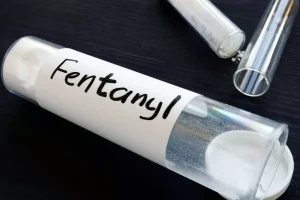This includes activities such as typing, playing tennis, or any activity that repeatedly uses a certain part of the body (like your wrist or elbow). This can cause your ligaments, tendons, and muscles to become inflamed and swollen. If you or a loved one is struggling with alcohol-related neuropathy or alcohol misuse or addiction, it’s important to know that help is available. Evidence-based addiction treatment can lead to positive health outcomes for those struggling with alcohol addiction. If you or a loved one is ready to seek help, consider visiting the rehabs.com treatment directory.
Alcoholic Neuropathy Diagnosis
This disease typically occurs in chronic alcoholics who have some sort of nutritional deficiency. Treatment may involve nutritional supplementation, pain management, and abstaining from alcohol. Coasting is a major feature of alcoholic neuropathy, largely due to chronic alcohol abuse. Even though much research was done in this area, still we do not have a full understanding of the mechanism alcohol neuropathy stages of alcoholic neuropathy. These include direct or indirect effects of alcohol metabolites, impaired axonal transport, suppressed excitatory nerve pathway activity, or imbalance in neurotransmitters. Activation of spinal cord microglia, mGlu5 spinal cord receptors, and hypothalamic-pituitary-adrenal axis also seem to be implicated in the pathophysiology of this alcoholic neuropathy.
Differential Diagnosis
More recent research, however, suggests that alcohol can directly damage nerves. The evidence points toward alcohol-related peripheral neuropathy being a form of toxic neuropathy, rather than nutritional neuropathy. Alcoholic polyneuropathy is progressive and gets worse over time, as the damage to the nerves increases with continued alcohol abuse. The problems that alcoholic neuropathy causes with muscle weakness, balance, and coordination can make a person more at risk for falling down and getting injured. Not being able to tell when things are too hot because of the way the nerve damage interferes with the ability to sense temperature changes can make one more susceptible to burns.
Alcohol-related peripheral neuropathy: a systematic review and meta-analysis
- If your doctor confirms a diagnosis of alcoholic neuropathy, they will discuss treatment options, including help for alcohol use disorder.
- ALN has clinical and electrophysiological features distinct from but overlapping with neuropathy from pure thia-mine deficiency (beriberi).
- It is most likely that drinking a lot of alcohol over several years causes direct damage to nerve cells and can also contribute to nutritional deficiencies in the body; these may both be factors in the onset of alcoholic polyneuropathy.
- The main goal of a treatment program for alcoholic polyneuropathy is to improve quality of life and offer relief from symptoms.
The cerebellum is the part of the brain that controls coordination and balance. This is a severe and short-term neurologic disease that can be life threatening. Consuming too much, especially over months or years, can result in severe symptoms. Your health care provider will perform a physical exam and ask about symptoms.
Evaluation & Tests
Thiamine treatment has not been successful in reversing ALN, and the features noted have resulted in re-examination of the 80-year-old theory that ALN is a nutritional rather than a toxic neuropathy. The development of an appropriate therapy will include cessation of alcohol ingestion but will also need to be aimed at the toxic target(s) of alcohol, which is the goal of ongoing research. Although the clinical and animal studies have focused on nutritional deficiency, biochemical studies provide evidence that alcohol may affect thiamine utilization rather than cause thiamine deficiency.
- All RCTs that were included As well as this, where interventional studies are cited a clear description of their design is in text to allow the reader to evaluate that articles risk of bias.
- A person can improve their outlook by significantly reducing or stopping their alcohol intake and ensuring that they are receiving the right balance of nutrients.
- However, compared to males, the symptoms of excessive alcohol consumption manifest earlier in females [129, 130].
- According to many studies, alcohol-induced autonomic neuropathy (AAN) not only leads to potential damage to internal organs but also increases the mortality rate of patients [157, 158].
- Autonomic nerves are concerned with muscular functions which are reflexive, such as breathing, heartbeats and peristalsis (rhythmic movements of the intestines).
- The treatment rests on abstinence from alcohol and the replacement of key nutrients.
- Learn more about this condition, including its symptoms, how it’s treated, and ways to cope.
The treatment rests on abstinence from alcohol and the replacement of key nutrients. Unfortunately, patient compliance is poor, and the condition often progresses, leading to poor quality of life. Alcoholic polyneuropathy is a neurological disorder in which peripheral nerves throughout the body malfunction simultaneously. It is defined by axonal degeneration in neurons of both the sensory and motor systems and initially occurs at the distal ends of the longest axons in the body. This nerve damage causes an individual to experience pain and motor weakness, first in the feet and hands and then progressing centrally. Alcoholic polyneuropathy is caused primarily by chronic alcoholism; however, vitamin deficiencies are also known to contribute to its development.







